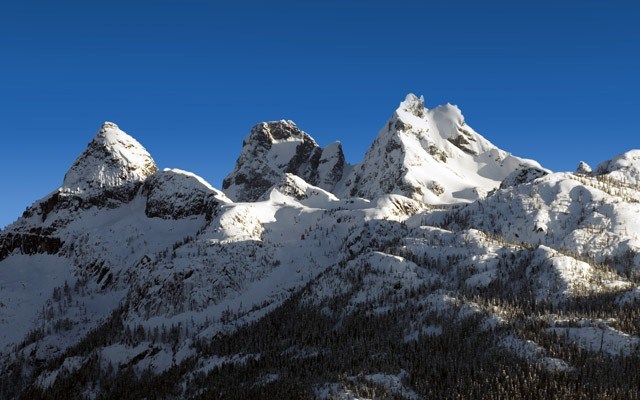The summer's second fatality on Squamish's Sky Pilot Mountain has reignited concerns amongst local search-and-rescue personnel over the increased ease of public access to the challenging terrain since the opening of the Sea to Sky Gondola.
On Saturday, Sept. 13, Michael Taylor slid 300 metres to his death while attempting to summit the Stadium Glacier on Sky Pilot with a friend. Although a doctor on scene administered CPR, the victim was deceased by the time rescue crews arrived approximately 45 minutes later, according to Squamish Search and Rescue manager Katy Chambers.
The 29-year-old Taylor, originally from Australia, had been living in Victoria.
Chambers believes Taylor and his climbing companion were using crampons for the first time on Saturday. Taylor was not wearing a helmet at the time of the incident.
"They were active individuals but I wouldn't call them experienced mountaineers or anything," she said.
In July, Owen Philip James Hosford, of Vancouver, fell to his death after entering an advanced climbing area via the Sea to Sky Gondola, raising questions for search-and-rescue crews in the corridor about the recent increase in calls as a result of easier access to the area through the new lift.
"It is creating easier access for most people, and we do see a lot more people up there that are not as prepared as they should be," Chambers explained. "The terrain starts off on old logging roads and gets challenging quite quickly... so it's something that our team is working towards to educate visitors and working with the Sea to Sky Gondola to improve the signage in the area."
The location where Taylor was climbing is a three-hour hike from the top of the Sea to Sky Gondola, and he accessed the area through a forest service road that goes up the backside of the mountain, Chambers said. The challenging backcountry terrain is six kilometres outside of the gondola's tenure, although Chambers noted the service road was inaccessible by vehicle until upgrades were made in advance of the lift's opening in May.
Still, Squamish RCMP Sgt. Wayne Pride said it's difficult to link the new gondola with a rise in emergency calls to the area.
"Numbers wise, one death is too many... and it would be easy to say, 'Yes, this is a concern,' but can I say (there's been an increase in calls) because of the gondola? I know we get a lot more people in the mountains, but it's a hard one to answer," he said.
"Since I've been here the last three years our search and rescue has been busy as heck, and we were even before the gondola opened."
Squamish Search and Rescue was the busiest search and rescue organization in the province last year, and is pacing above its 10-year average so far in 2014, although not yet as busy as the record-breaking 2013.
The gondola's 68-hectare tenure area has boundary signposts and staff makes every effort to warn hikers of the risks of entering the challenging backcountry terrain, said GM Trevor Dunn.
"We just continue to be diligent with our signage and make sure that people who are coming up the gondola are aware of the risks associated with backcountry travel, and we also recommend people use an accredited guide if they're venturing out there," he said, adding that there's not enough data at this point to suggest the lift has resulted in an increase in emergency calls.
"We do appreciate all the efforts the RMCP and Squamish Search and Rescue puts in to calls like this and we're saddened by the news," Dunn said. "Our condolences go out to the family of the victim."
Squamish Search and Rescue president John Howe could not be reached for comment.




